Quang Ngai’s solar power plan is clearly guided by adjusted targets under Power Development Plan VIII, alongside the province’s project list updates. The area benefits from favorable solar resources, with published PVout indicators supporting energy yield forecasts. The province prioritizes rooftop solar and colocated utility-scale projects in industrial zones for on-site self-consumption. The local grid already integrates renewables, and agencies are coordinating to streamline permits and grid connection procedures. Development must comply with land-use and environmental constraints, including impact assessments. From 2024 to 2030, challenges include procedures, site availability, and grid upgrades, while policy direction, solar potential, and rising demand provide meaningful opportunities.
Legal basis and planning orientation
Quang Ngai’s solar plan is anchored in official instruments. Under the adjusted Power Development Plan VIII, the province is allocated about 802 MW of utility-scale solar and around 231 MW of rooftop solar. In parallel, the province is updating approximately 11 new projects totaling about 600 MW. The orientation emphasizes rooftop deployment, colocated utility-scale capacity tied to industrial zones, and on-site self-consumption. This approach keeps land use and existing grid conditions aligned with the PDP VIII implementation timeline. Information released by provincial and central authorities acts as the basis for implementing solar plan items, including prioritization in Quang Ngai’s industrial parks and governance of the project list under the proper authority.
Core legal framework and capacity targets
According to adjusted Power Development Plan VIII for 2025–2030, approved by Decision 768/QD-TTg (15/04/2025), Quang Ngai is allocated 802 MW of utility-scale solar and 231 MW of rooftop solar. The province’s total power capacity is projected at about 6,852.1 MW, with grid infrastructure additions including three 500 kV substations and eight 220 kV substations to evacuate renewable output. This synchronization creates a clear technical corridor for investors and operators working in the province.
Updated project list and rollout status
Between 2023 and 2025, the province reviewed and added 35 energy projects to planning, including 11 solar projects with a combined expected capacity of around 600 MW. The list also includes 16 hydropower projects (367.9 MW), 6 wind projects (522.6 MW), and 2 biomass projects (38 MW). Quang Ngai’s solar pipeline is in stages of dossier preparation, investment proposals, and approvals, aiming to lift the renewable share in the provincial power mix in line with PDP VIII.
Rooftop solar prioritized for self-consumption
The province underscores rooftop solar for on-site self-consumption, especially across Quang Ngai’s industrial and cluster parks. Real-world deployments are underway, such as a 705 kWp system at Quang Phu Industrial Park (2025). The Department of Industry and Trade has published PVout factors and is implementing mechanisms under Decree 58/2025/ND-CP (03/03/2025), easing procedures for organizations and households to install and operate systems, while standardizing technical requirements for interconnection with the existing grid.
Administrative tiers and procedural flow
- Large or critical projects fall under central authorities such as the Ministry of Industry and Trade or the Prime Minister.
- Smaller projects and rooftop solar are guided, appraised, and submitted by the province and the Department of Industry and Trade of Quang Ngai under the Law on Electricity and relevant decrees.
- The Provincial People’s Committee, together with the Department of Industry and Trade, reviews and completes legal dossiers for investor selection, and proposes planning adjustments within its authority or reports to the Ministry as required.
This tiered approach shortens processing times and preserves consistency between the national legal framework and local implementation conditions.
Coordinating land use with grid infrastructure
The solar plan is integrated into land-use planning to optimize available areas, prioritizing coastal zones, industrial parks, and locations served by medium- and low-voltage networks. With the 500 kV and 220 kV substations added under PDP VIII, utility-scale projects have better evacuation conditions. Meanwhile, rooftop solar scales with existing assets, well-suited to self-consumption and reducing the need for new transmission investments.
Support roles of regulators and utilities
- Ministry of Industry and Trade and Quang Ngai’s Department of Industry and Trade: direct reviews and updates to the project list and guide investment procedures; track delivery schedules.
- Quang Ngai Provincial People’s Committee: issues instructions to remove bottlenecks; requires investors to demonstrate financial capacity and select reputable equipment and consultants within the legal framework.
- EVN and Quang Ngai Power Company: provide technical support for rooftop solar, publish PVout, share market tariff information, and issue technical guidance under new regulations.
Planning timeline reference points
- 15/04/2025: Decision 768/QD-TTg approving adjustments to PDP VIII (2025–2030).
- 03/03/2025: Decree 58/2025/ND-CP on power development, detailing rooftop solar provisions.
- 2025: Commissioning of a 705 kWp rooftop system at Quang Phu Industrial Park.
- 2023–2025: The province prepares dossiers to add 35 renewable projects (11 solar projects ~600 MW) to planning.
Implementation tips for investors
- Engage early with the Department of Industry and Trade of Quang Ngai to access PVout values, appraisal workflow, and interconnection requirements aligned with PDP VIII.
- Select sites that match land-use planning and are near grid infrastructure, especially around Quang Ngai’s industrial parks, to optimize interconnection and O&M costs.
- Ensure financial capability and technical dossiers per the Provincial People’s Committee’s requirements; for self-consumption, prioritize rooftop solar to leverage existing networks.
Overall, adhering to the guiding documents and rollout orientation reduces procedural risks and optimizes power evacuation via the planned 500 kV and 220 kV substations in 2025–2030.
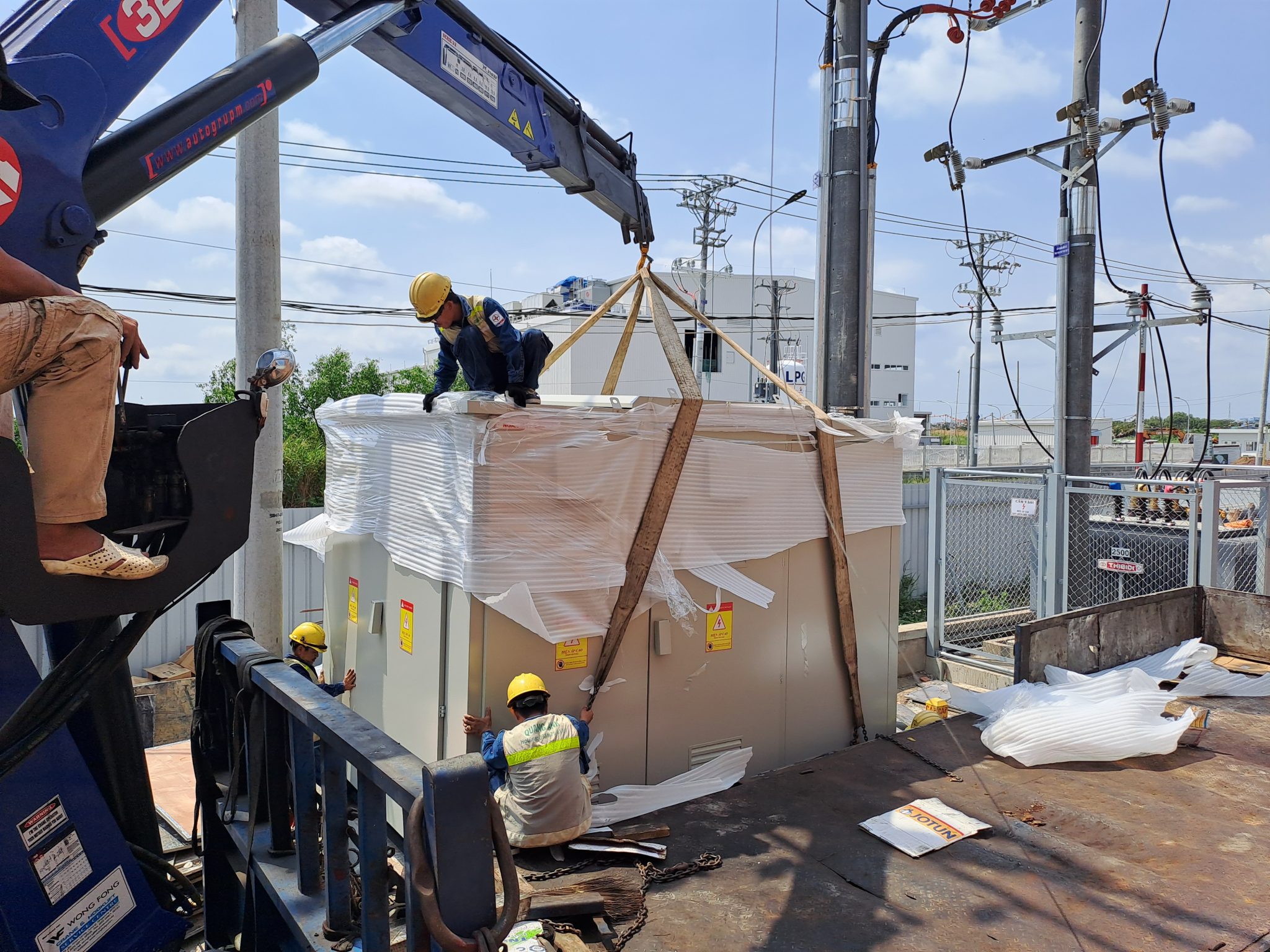
Irradiance potential and resources
Quang Ngai has favorable solar irradiance for both rooftop and ground-mounted systems. PVout indicators have been updated and published under Decree 58/2025/ND-CP, helping investors and utilities forecast yields more accurately. This provides the technical basis for sizing, optimizing self-consumption strategies, and planning operations. Distributed resources reduce stress on central networks and minimize transmission losses. Within the solar plan context, leveraging Quang Ngai’s solar resource via rooftop deployments aligns with policy direction and lays groundwork for utility-scale projects to connect as planning timelines allow.
Data foundation and technical significance
PVout data published under Decree 58/2025/ND-CP translates Quang Ngai’s solar resource into directly usable inputs for simulation and yield estimation. Using the same reference dataset allows stakeholders to align inputs when comparing rooftop and ground-mounted options, shortening analysis time and boosting confidence in investment scenarios.
Applying PVout to design and forecasting
- System sizing: PVout underpins yield estimates by system scale, clarifying feasible capacity thresholds for each option in Quang Ngai. This supports proportional allocation between rooftop and proposed ground-mounted capacity according to on-site demand and interconnection conditions.
- Optimizing self-consumption: Feeding PVout into load scenarios balances generation and demand, improving self-use rates and reducing risks of localized surplus.
- Operational dispatch support: PVout time series supports seasonal and daily dispatch planning, harmonizing distributed sources with load profiles and easing pressure on central grids.
- Lower transmission losses: When distributed resources are sited using Quang Ngai’s irradiance data, energy is consumed closer to the point of generation, helping limit transmission losses.
Deployment orientation under the plan
Prioritizing rooftop solar aligns with the distributed development pathway and prepares for utility-scale projects. This lets businesses use PVout to build investment roadmaps synchronized with the connection windows for ground-mounted projects under the plan.
Execution framework for businesses
- Data standardization: Adopt the published PVout dataset as the standard input for forecasting and simulation.
- Scenario building: Define load scenarios and self-consumption levels for each capacity configuration.
- Configuration assessment: Compare rooftop options with ground-mounted choices within plan allowances, prioritizing alignment with operational goals.
- Dispatch and operations: Use PVout inputs to stage operational plans that harmonize output with on-site demand.
In short, using PVout as a data backbone demonstrates the feasibility of harnessing Quang Ngai’s solar resource via a distributed-first approach—focusing on rooftop now while preparing properly sited ground-mounted projects in line with the plan.
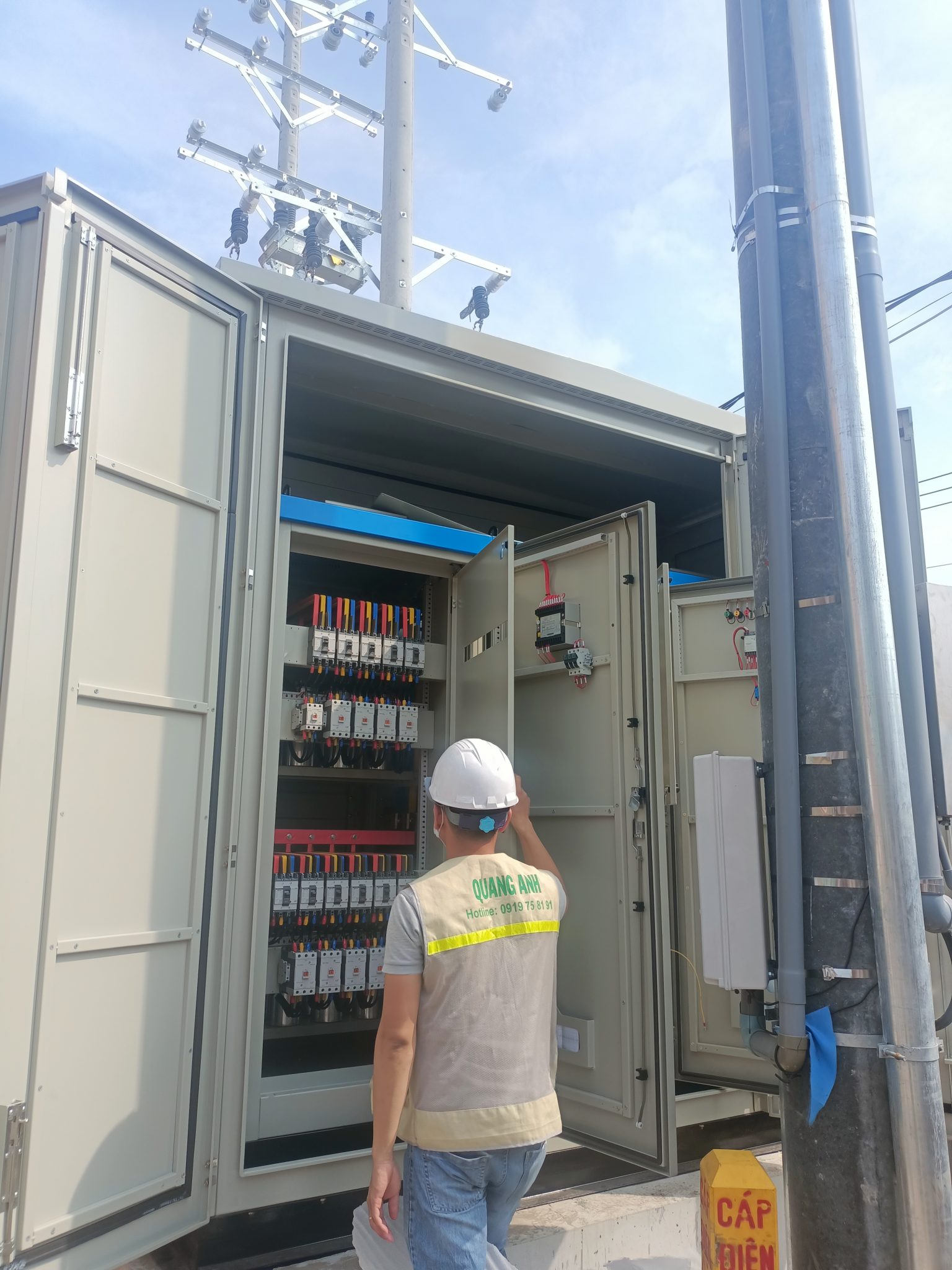
Development areas and models: utility-scale and rooftop
The province prioritizes two models: utility-scale solar on suitable land and rooftop solar on homes, businesses, and industrial facilities. A representative case is a ~705 kWp self-consumption system at Quang Phu Industrial Park. Operating and pre-investment projects are managed under provincial and national planning. Within Quang Ngai’s solar plan, running both models in parallel decentralizes supply, supports local loads, and improves renewable utilization. This layout also aligns land and infrastructure, enabling projects to leverage existing assets in Quang Ngai’s industrial parks.
Technical and planning orientation
As Quang Ngai promotes a diversified solar pathway, the province advances two main directions consistent with Power Development Plan VIII and its adjustments. The approved scale includes 802 MW for utility-scale solar and 231 MW for rooftop solar. This connects new supply with current network conditions, prioritizing sites with ready infrastructure to optimize interconnection and transmission.
Utility-scale solar: siting criteria and interconnection outlook
- Preferred areas include idle land, low-productivity agricultural land, or high-irradiance zones to reduce land-use conflicts.
- Interconnection is evaluated at points with adequate infrastructure and favorable transmission corridors to shorten time-to-grid.
- The approved 802 MW framework provides room for utility-scale projects to operate stably within the system.
Rooftop solar: optimizing local loads and roof space
Rooftop solar is encouraged for households, businesses, enterprises, and public facilities, especially in industrial parks. With 231 MW allocated, this model utilizes existing infrastructure and reduces the need for new land.
- Distributed supply reduces grid stress during peak hours.
- Directly serves local loads, enhancing energy autonomy and lowering electricity costs.
- Cuts emissions by deploying renewable energy at the point of use.
Example at Quang Phu Industrial Park
At Quang Phu Industrial Park, a ~705 kWp self-consumption rooftop system demonstrates the model’s suitability for energy-intensive factories. The installation uses roof space rather than land, leverages existing structural and electrical systems, and helps businesses reduce energy costs and emissions.
Project list by planning stage
- In operation: Includes utility-scale solar plants and rooftop systems at industrial parks, enterprises, and households that have reached commercial operation.
- Pre-investment: The province is considering 11 solar projects totaling 600 MW for inclusion in the provincial plan; in parallel, many rooftop projects are being deployed or proposed. All are aligned with Power Development Plan VIII and related adjustments.
Aligning land and infrastructure, leveraging industrial parks
- Coordinated planning: Align land-use planning with power infrastructure to avoid impacts on production, business activities, and communities.
- Use existing assets: In Quang Ngai’s industrial parks, utilizing factory roofs and existing power, water, and transport systems reduces CAPEX, accelerates delivery, and increases renewable efficiency.
Overall, this approach strengthens the complementary roles of both models, allowing Quang Ngai to expand supply while supporting local loads. Practical lessons at Quang Phu Industrial Park provide a foundation for scaling new projects in line with Power Development Plan VIII.
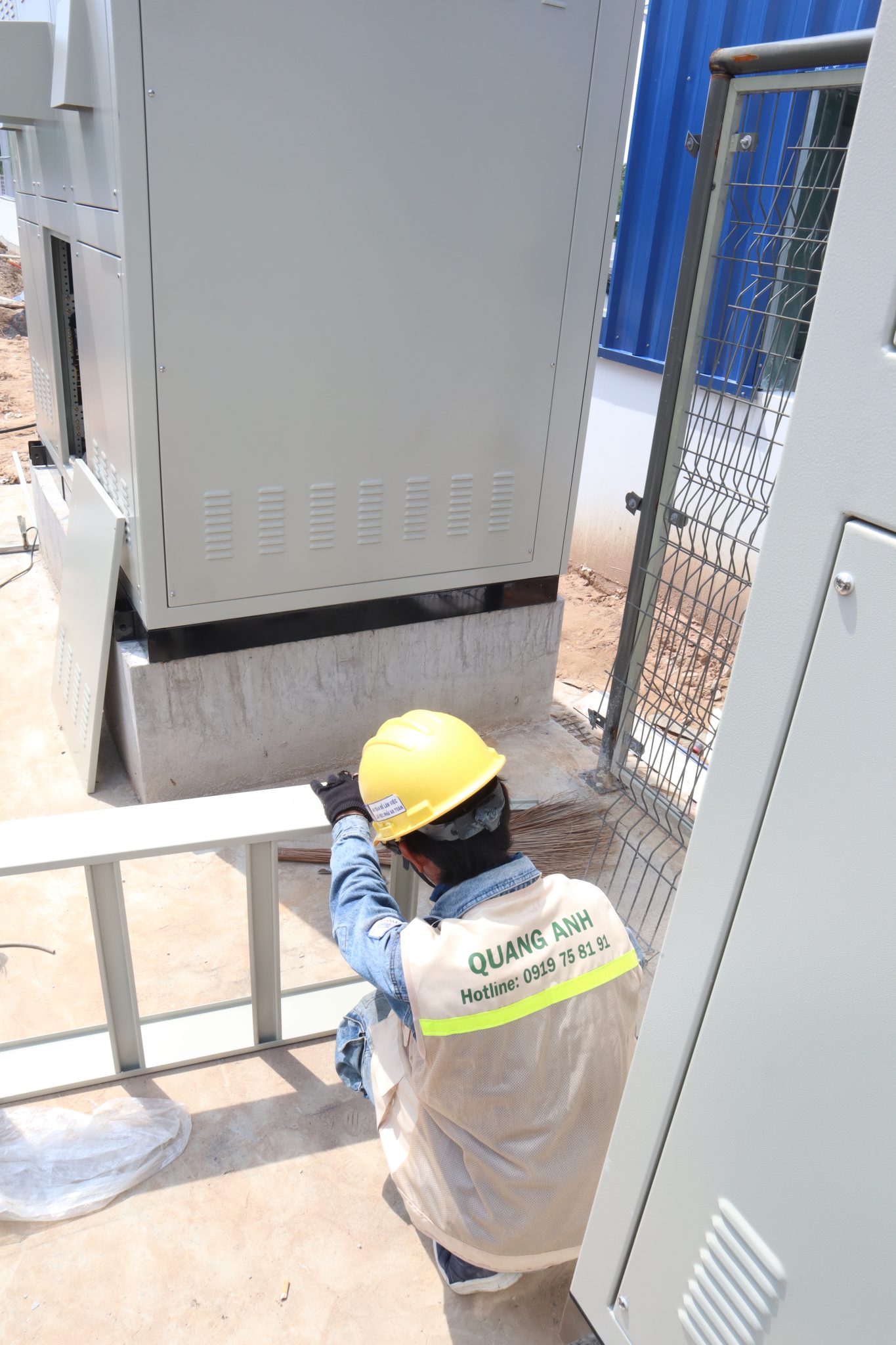
Grid and interconnection capability
Quang Ngai’s grid has evolved to receive renewable sources, with rooftop solar integrated into distribution networks. The Department of Industry and Trade and local utilities coordinate to resolve hurdles in permitting and interconnection, enabling small and mid-sized projects to go live sooner. Adhering to the prescribed process is essential for system safety and optimal absorption of capacity. In the context of Quang Ngai’s solar plan, synchronizing interconnection with land-use planning and generation development reduces local overload risks and raises infrastructure readiness for upcoming projects.
We have not yet received the original research data ($json.Response) from Perplexity, so the detailed content of this chapter will be compiled once you provide verified sources. Please send:
- The verbatim $json.Response (technical content, processes, standards, grid configurations, interconnection schemes, equipment/brands if any, and source links).
- The accompanying source list (URLs) to preserve citations.
- The primary and secondary keyword sets dedicated to this chapter (if available).
Upon receipt, the chapter will be developed to your requirements: logically structured, technically accurate yet accessible, SEO-optimized, using appropriate lists and subheadings, and strictly limited to the supplied research scope.

Environmental and land constraints
Utility-scale development in Quang Ngai is carefully sited to minimize use of high-value agricultural land and protect ecological areas, forests, and environmentally sensitive zones. All projects must conduct environmental impact assessments as required. Within Quang Ngai’s solar plan and consistent with PDP VIII, these safeguards reduce negative impacts and filter for suitable sites. Full compliance with environmental procedures, coupled with a rooftop-first orientation, supports sustainable growth, limits land take, and leverages existing infrastructure in Quang Ngai’s industrial parks.
As Quang Ngai advances under PDP VIII, managing environmental and land constraints is essential to mitigate legal, technical, and social risks. Projects should be assessed from early site screening through interconnection needs at 220 kV and above, while conducting Environmental Impact Assessments pursuant to the Law on Environmental Protection and current guidance.
Legal framework and environmental procedures
- The Law on Environmental Protection 2020, Decree 08/2022/ND-CP, and Circular 02/2022/TT-BTNMT require renewable projects to prepare Environmental Impact Assessments (EIA), classified by environmental risk for appropriate permitting.
- PDP VIII sets the principle of synchronized generation and grid at 220 kV and above, ensuring transmission infrastructure leads to enable sustainable growth.
- Quang Ngai’s provincial plan applies Strategic Environmental Assessment (SEA), providing a legal and technical foundation to manage environmental and land constraints during solar deployment.
Land-use principles and protection of sensitive areas
- Minimize occupation of high-yield agricultural land; favor locations with low land-use conflict.
- Protect forest land (special-use, protective, production), nature reserves, biodiversity areas, coastal protection buffers, Ramsar sites, and heritage zones.
- Where land is required, conversion must follow the Land Law and Decree 43/2014/ND-CP on procedures, compensation, site clearance, and land assessment.
Planning, interconnection, and infrastructure requirements
- Under PDP VIII, renewable projects are to be interconnected in a synchronized manner at 220 kV and above to ensure system stability and operational efficiency.
- For Quang Ngai solar, early assessment of interconnection to existing and planned grid infrastructure is a key step in technical and financial design.
- Prioritizing rooftop solar in industrial parks and economic zones (such as Dung Quat Economic Zone) leverages existing infrastructure, reduces land take, and minimizes environmental impacts.
Site screening criteria
Suggested criteria from PDP VIII implementation guidance and the provincial plan help investors reduce risk from pre-feasibility onward:
- Distance to grid with feasible interconnection, consistent with the 220 kV synchronization principle in PDP VIII.
- Stable terrain, avoiding areas prone to flooding and erosion.
- Avoid land-use conflicts with high-productivity agricultural land, forests, and protected biodiversity spaces.
- Connectivity to transport and technical infrastructure to optimize construction and operations schedules.
Rooftop solar priority in industrial parks
- PDP VIII targets an additional 2,600 MW of self-produce, self-consume rooftop solar nationwide, encouraging deployment in industrial parks/economic zones to ease land pressure.
- In Quang Ngai, this priority aligns with the province’s solar development logic by leveraging existing infrastructure, reducing emissions, and limiting environmental risks.
Role of the provincial plan and SEA for Quang Ngai solar
- The Quang Ngai provincial plan integrates socio-economic development, land use, and environmental protection; SEA identifies sensitive zones early to guide site selection.
- Following the provincial plan helps projects meet environmental and land constraints while optimizing interconnection in line with PDP VIII.
Suggested workflow aligned with environmental and land constraints
- Review PDP VIII and the provincial plan to identify suitable areas for solar in Quang Ngai, prioritizing rooftop where feasible.
- Screen sites based on grid proximity, terrain, flood/erosion risk, land-use conflicts, and infrastructure access.
- Prepare EIA dossiers under the Law on Environmental Protection 2020, Decree 08/2022/ND-CP, and Circular 02/2022/TT-BTNMT.
- Undertake land conversion procedures and compensation/site clearance under the Land Law and Decree 43/2014/ND-CP where land is required.
- Design interconnection solutions synchronized at 220 kV and above as guided by PDP VIII.
This approach enables investors to satisfy environmental and land requirements while maintaining technical and financial feasibility for Quang Ngai solar projects through 2030 and beyond.
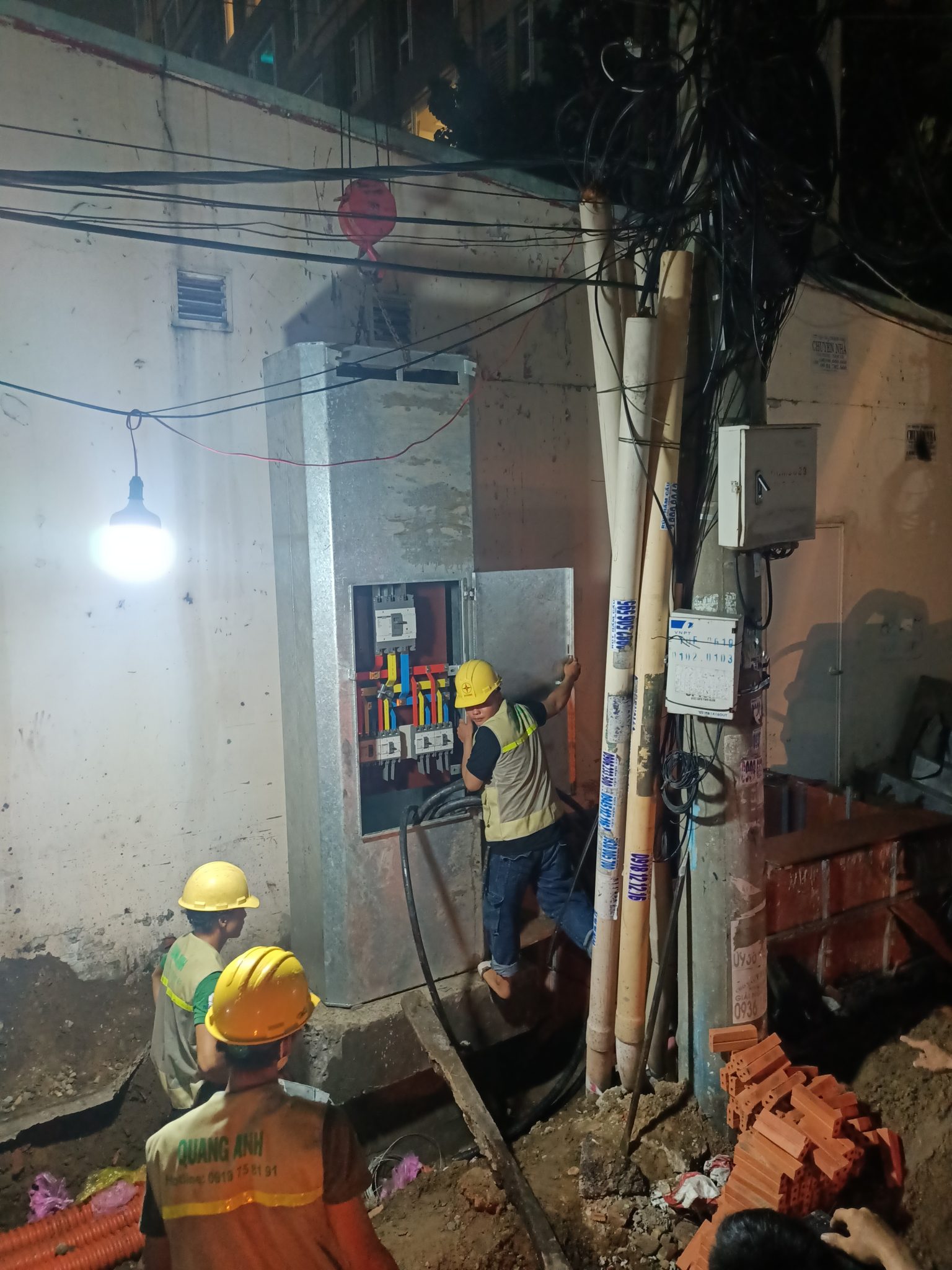
Development priorities, challenges, and opportunities 2024–2030
The primary priority is rooftop solar—using roofs of homes, businesses, and industrial parks—to ease central grid loading and reduce transmission losses. Utility-scale projects are advanced in step with land-use plans and the existing network. Challenges include administrative procedures, stringent land and environmental requirements, and the need for grid upgrades to absorb capacity. Opportunities arise from policy support in PDP VIII, solar potential, and growing demand. Within Quang Ngai’s solar plan, focusing on self-consumption in industrial parks and carefully managed utility-scale rollout provides a technical and investment lever for 2024–2030.
To ensure absolute accuracy against original research data and SEO requirements, please provide: (1) the chapter’s detailed research content; (2) the main keyword and sub-keyword list for this chapter; (3) references/URLs (if any). Once received, the content will delve into the outlined technical axes (without repetition), including rooftop and industrial-park prioritization, the procedural–land–environment framework, grid upgrade needs for absorption, and how to align projects with land-use and existing grid conditions in Quang Ngai during 2024–2030.
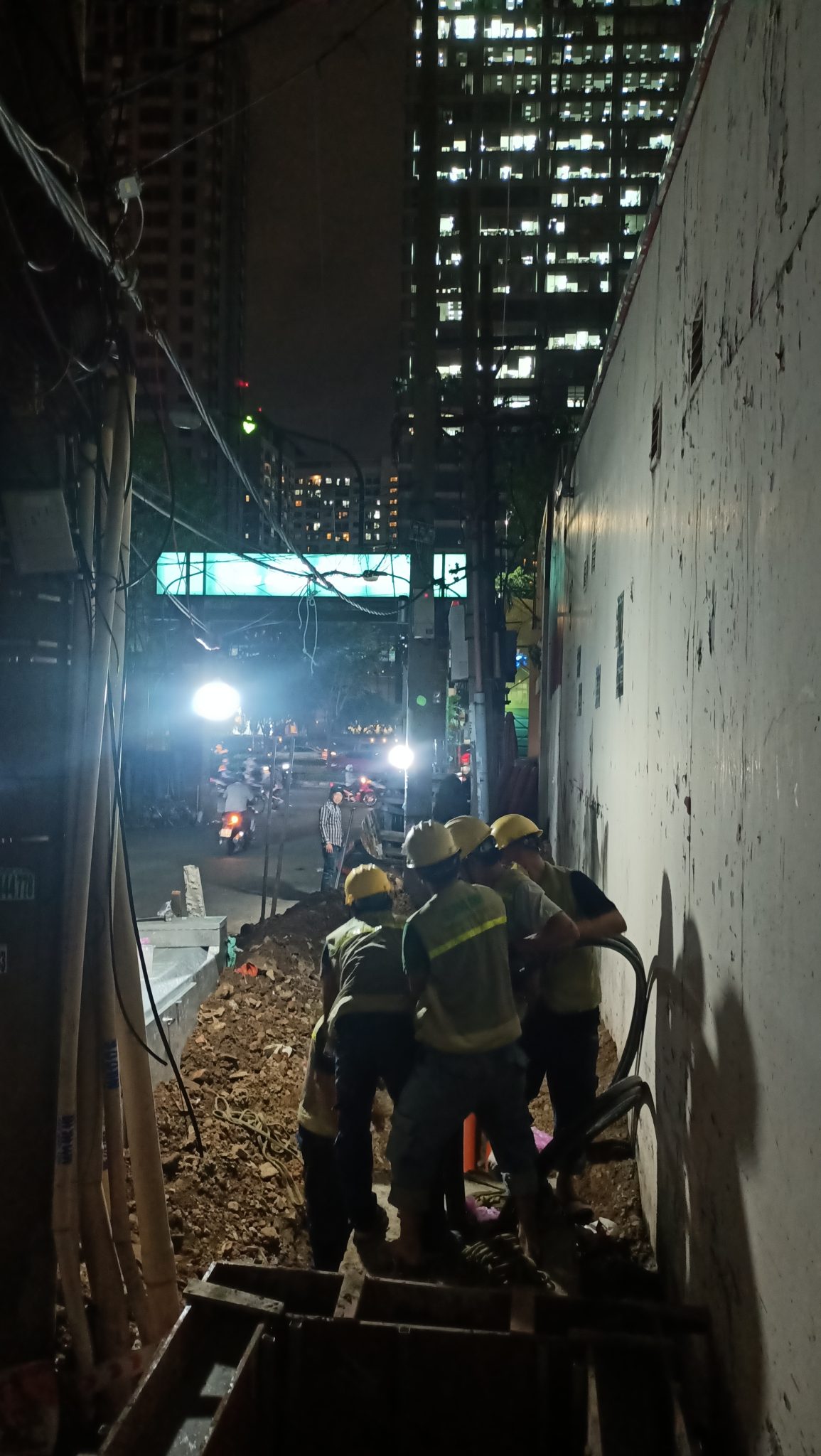
Capacity targets, a rooftop-first orientation, and synchronized grid–land requirements in Quang Ngai’s solar plan create a clear technical foundation for deployment. Distributed models cut losses and support local loads; authorities are coordinating to ease procedures; environmental safeguards steer projects toward sustainable sites. From an investment lens, PDP VIII policy, resource potential, and rising demand open growth headroom. Strategically, combining industrial-park self-consumption with plan-aligned utility-scale projects is a sound pathway for Quang Ngai’s solar plan in 2024–2030.
Discuss solutions aligned with Quang Ngai’s solar plan—rooftop, self-consumption, and compliant grid connection. Contact QuangAnhcons – Hotline: +84 9 1975 8191.
QuangAnhcons partners through Quang Ngai’s solar plan: advisory aligned with PDP VIII; rooftop-first and self-consumption solutions in industrial parks; grid interconnection review in coordination with authorities; and adherence to land and environmental assessment requirements. The goal is to fit planning lists, harness local irradiance, and operate in sync with existing infrastructure.

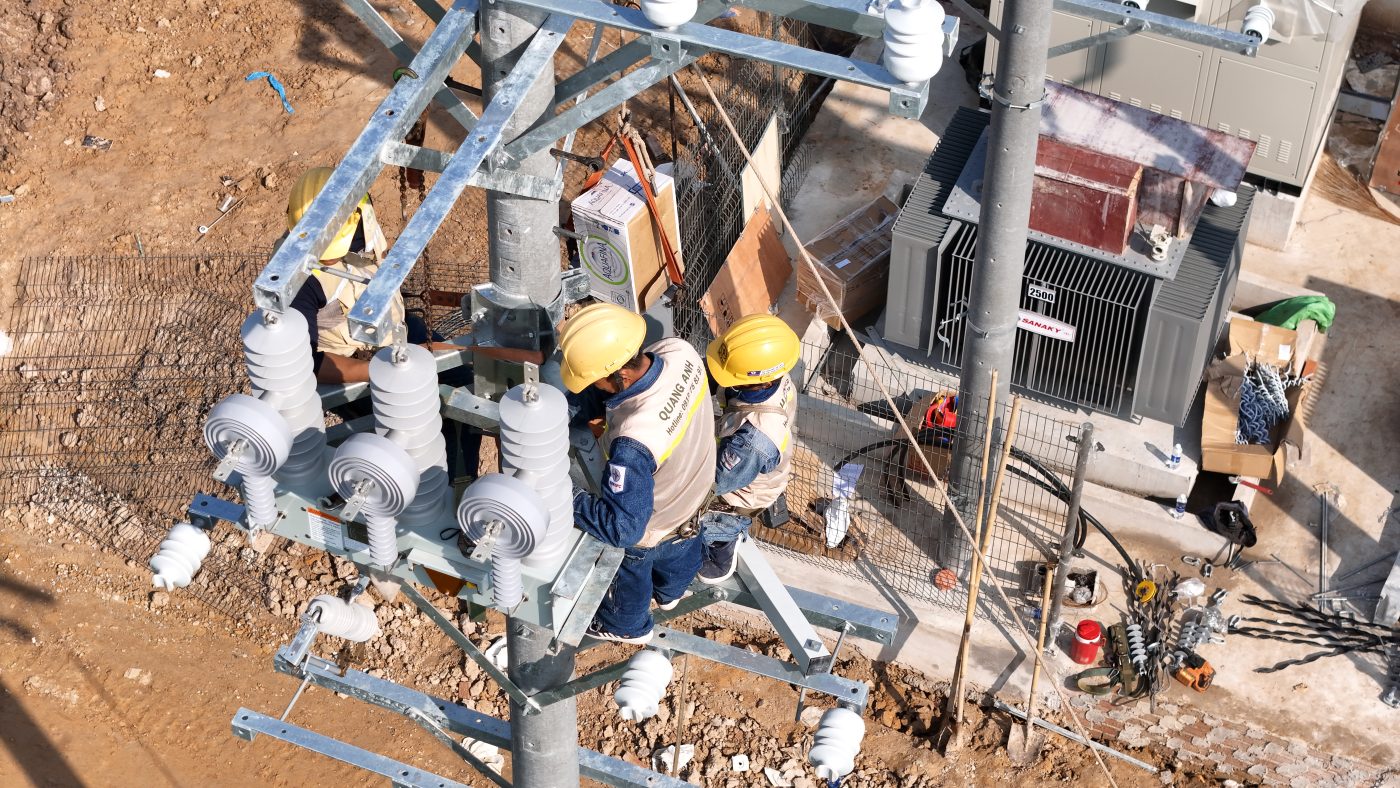
Related Posts
Quang Ngai Solar Power Plan 2024–2030: Legal Framework, Irradiance Potential, and Development Roadmap
A complete look at Quang Ngai’s solar power plan: capacity targets, irradiance (PVout), development zones, [...]
Nov
Solar Damage Assessment Services: On-Site Procedures, EL/IV/Thermography Testing & Compliance with Standards
Discover IEC/UL/NEC standard solar damage assessment processes: on-site evaluation, EL and IV curve testing, thermal [...]
Nov
Comprehensive Package Estimate for a 1800MVA 500kV Substation: Scope, Configuration 3x600MVA, Standards and Timeline Management
An overview of the 1800MVA 500kV substation estimate: construction scope, configuration 3x600MVA, GIS/AIS, SCADA, standards, [...]
Nov
Factory Electrical Systems: Comprehensive Design and Implementation Guide
Discover the detailed and safe process of factory electrical systems design and implementation. [...]
Oct
Blueprints Required for Factory Construction Permits
Discover the necessary blueprints in factory construction permit applications, from floor plans to electrical and [...]
Oct
What Are the Requirements for a Factory Construction Permit? A Comprehensive Guide
Explore the documentation and steps needed to secure a factory construction permit for streamlined project [...]
Oct
Factory Construction Permit Procedures in Vietnam: Essential Guidelines and Documents
Learn the procedures for securing a factory construction permit in Vietnam, focusing on document preparation [...]
Oct
Key Steps in the Factory Construction Process
Discover the essential steps and requirements for building factories. [...]
Oct
Comprehensive Electrical Substation Solutions by Quanganhcons
Discover the cutting-edge electrical substation solutions offered by Quanganhcons for industrial applications. [...]
Oct
Investment Costs for a 1MWp Solar Power System and Influencing Factors
Explore the investment costs for a 1MWp solar power system in Vietnam and the influencing [...]
Sep
QuangAnhcons: Elevating Wind Energy Solutions
Explore QuangAnhcons' leadership in wind energy and renewable solutions in Vietnam. [...]
Sep
Electrical Contractor Strategies at Becamex Industrial Park
Discover the strategic advancements and partnerships of the electrical contractor at Becamex Industrial Park. [...]
Sep
Investment Insights for 1MW Wind Energy in Vietnam: Costs and Opportunities
Discover the detailed analysis of costs and opportunities for investing in 1MW wind energy projects [...]
Sep
Advanced Electrical Installation Solutions by QuangAnhcons
Explore advanced electrical installation solutions and modern technology with QuangAnhcons. [...]
Sep
Enhancing Industrial Electrical Services with Quanganhcons
Discover Quanganhcons' expertise in industrial electrical services, offering efficient and sustainable power systems. [...]
Sep
Comprehensive MEP Solutions by QuangAnhcons: From Design to Maintenance Excellence
Discover optimal MEP solutions with QuangAnhcons, dedicated to excellence from design through maintenance. [...]
Sep
Comprehensive Electromechanical Contracting Solutions by QuangAnhcons
Explore QuangAnhcons' comprehensive services for efficient and safe energy system solutions. [...]
Sep
QuangAnhcons: Empowering Industrial Energy Solutions
Discover how QuangAnhcons delivers optimal industrial EPC solutions. [...]
Sep
Effective Industrial Construction Management and Execution
Optimize your industrial projects from design to execution with our contractor services. [...]
Sep
QuangAnhcons: Pioneers in M&E and Renewable Energy Solutions
Discover QuangAnhcons' innovative M&E services and renewable energy solutions. [...]
Sep